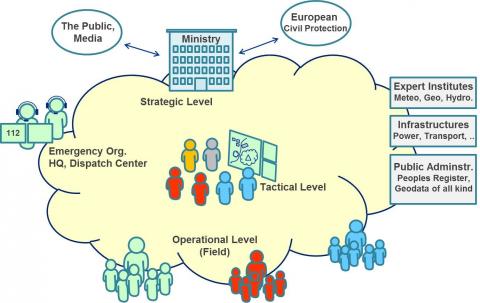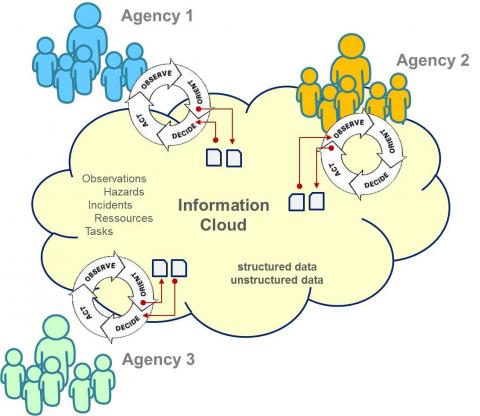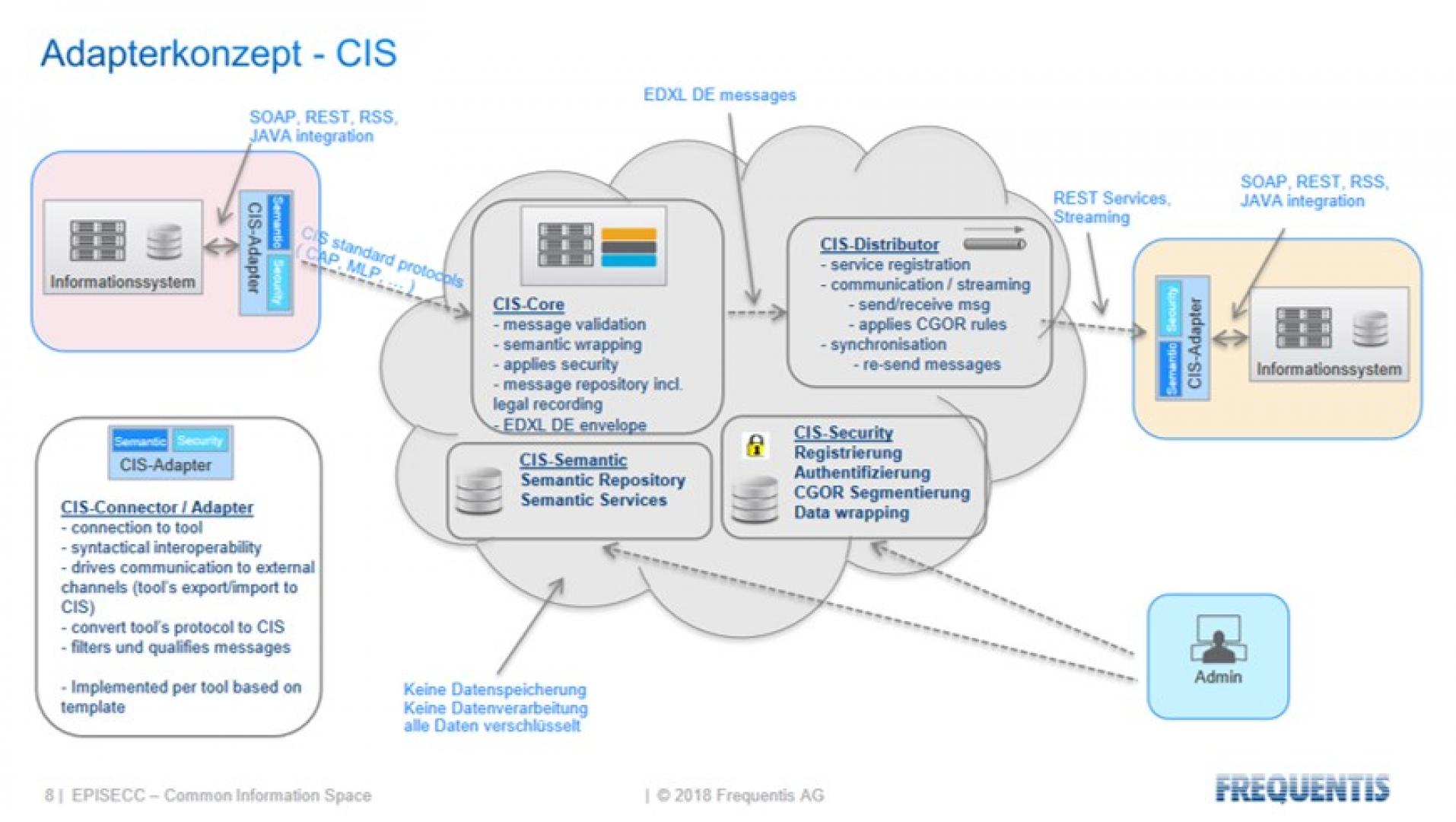Contact
Provider(s):
of all actors involved in and management is an imperative pre-requirement for minimizing damage and losses in case of incidents. In order to enhance the opportunities of improved information exchange between involved stakeholders the “Common Information Space (CIS)” has been designed and developed (within the EU funded FP7 project EPISECC, https://www.episecc.eu/) to enable seamless information exchange between different practitioners involved in European crisis and management. The concept of the CIS ensures that the organizations participating in the information processes can continue to use their proprietary IT solutions applied for . Unobstructed information exchange between IT solutions of different origin can be realized by developing an adaptor to the CIS only once. Such an approach reduces complexity in a considerable way. For instance, in case of 5 interacting organizations the CIS concept requests to develop 5 adaptors instead of 20 interfaces in case of interfacing each of the 5 tools on a bilateral way. In addition, with the EPISECC CIS, it is possible to semantically annotate exchanged messages as well as to set up subgroups of participating organizations in order to manage different types of incidents in parallel. This ensures that messages are only shared between the organizations involved in the management of a specific event.
Supported Use Cases
Data/information flow between local emergency management (LEMA) authority and infrastructure providers

Data/information flow between responders and the local emergency management authority (LEMA)

Data/information flow from responders to responders

 |
Portfolio of Solutions web site has been initially developed in the scope of DRIVER+ project. Today, the service is managed by AIT Austrian Institute of Technology GmbH., for the benefit of the European Management. PoS is endorsed and supported by the Disaster Competence Network Austria (DCNA) as well as by the STAMINA and TeamAware H2020 projects. |




